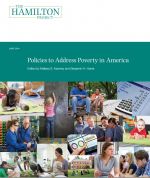
This proposal is chapter thirteen of The Hamilton Project’s Policies to Address Poverty in America, and a segment in Improving Safety Net and Work Support.
Introduction
Rising wage inequality and stagnant real wages have contributed to inequality in family incomes during the past three decades. While the expansion of the Earned Income Tax Credit (EITC) and the Supplemental Nutrition Assistance Program (SNAP) have helped mitigate the impact on low-income families (Bitler and Hoynes 2010), federal minimum wage policy has not contributed to the solution. The federal minimum wage has failed to keep pace with both the cost of living and the median wage in the labor market. As a consequence, working full-time at the minimum wage does not allow many families to escape poverty, or to attain economic self-sufficiency.
State and local governments can set minimum wages in excess of the statutory federal minimum wage. Indeed, state and local governments have played an important role in establishing minimum wages across the country; as a result, thirty-seven states had state minimum wages exceeding the federal level in 2007 prior to the most recent federal increase. Cities, too, have begun setting higher minimum wages, as evidenced by city-level wage minimums in Albuquerque, San Francisco, San Jose, Santa Fe, Seattle, and Washington, DC; other cities are actively exploring possibilities of raising minimum wages.
In this policy memo, I propose a framework for effective state and local minimum wage policy. First, I propose using half the local-area median wage as an important gauge for setting an appropriate level of the minimum wage. Second, I propose that state and local governments take into account the local cost of living as a relevant consideration in setting a minimum wage, and I provide estimates of how state minimum wages would vary if they reflected cost-of-living differences. I also recommend the use of regional consumer price indexes (CPIs) to index the local minimum wage. Finally, I propose that cities and counties coordinate regional wage setting to mitigate possible negative effects of local mandates.
The implementation of the state and local framework does not override the need for reform at the federal level. Thoughtful reforms to the federal minimum wage can help reduce poverty and mitigate inequality. The federal minimum wage has been the focus of substantial debate by academics and policymakers; this proposal focuses on state and local reforms that have received substantially less attention. These state and local reforms can be an important part of the policy portfolio for reducing the incidence of poverty and for helping low-income families support themselves as they strive toward the middle class. In particular, although the federal minimum wage serves as a floor in the labor market, there is some room for additional increases in higher-wage areas.


